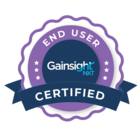In the context of the CS product, say an application user(CSM/Admin) has left your company and so the user now needs to be removed from the CS application. As this user has already done some activities in different product modules (say timeline activities),
Here is the poll, Please select one of the options and feel free to add more comments below
Question
CS User Delete - PII details
How do you want to treat the Personal Identifiable Information (PII) for these users in their past a
Sign up
If you ever had a profile with us, there's no need to create another one.
Don't worry if your email address has since changed, or you can't remember your login, just let us know at community@gainsight.com and we'll help you get started from where you left.
Else, please continue with the registration below.
Welcome to the Gainsight Community
Enter your E-mail address. We'll send you an e-mail with instructions to reset your password.




